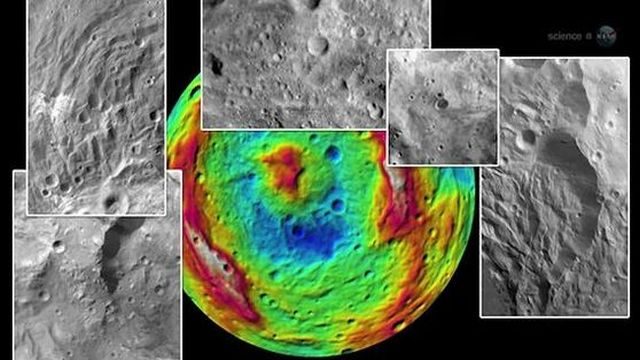
With the New Horizons spacecraft hurtling toward its 2014 encounter with Pluto, and with the Dawn spacecraft now at its most up-close and personal encounter with Vesta, we are in the process of learning scads of information about two objects that are among the poorest understood and least explored bodies in the Solar System.
Before NASA's Dawn settled into orbit around the asteroid Vesta—the second largest object in the Main Asteroid Belt, after the Dwarf Planet Ceres—we knew very little about it. That it is mega-mountain of rock 330 miles across that rotates rather quickly in space and is slightly egg-shaped, these things we knew—but not much more.
What Dawn has revealed to us, however, is a tiny world with unexpected complexities, inside and out.
Inside, Vesta's anatomy may not be unlike Earth and the other Terrestrial planets, which all developed cores heavy with iron and mantles and crusts made of lighter silicate rocks when they were young and molten. This "differentiation" occurs for the same reason that gold particles sink to the bottom of a gold-pan as a prospector shakes the water-sand slurry back and forth: the gold is denser, the sand lighter, so the materials separate.
Outside, Vesta's surface offers amazing landscape vista opportunities for a future robot lander or astronaut: complex topography of valleys, cliffs, troughs, ridges, and a huge mountain, with elevation differences deviating above and below the global average elevation by as much as 15 miles—that's three Mount Everests, or two Marianas Trenches!
